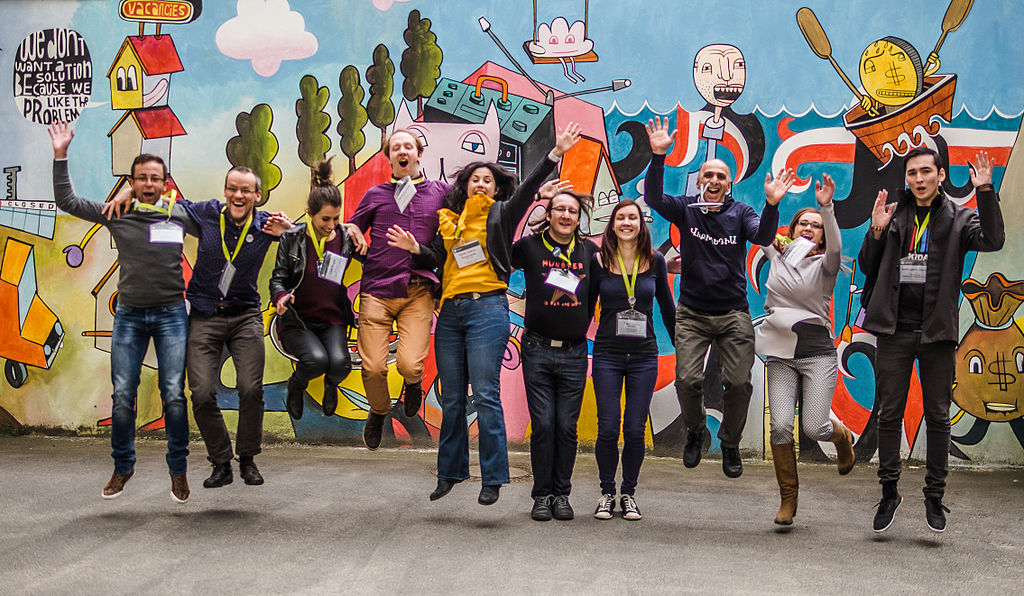There are many ways you can celebrate Spring in Central and Eastern Europe. In some places you drown or burn Marzanna, in others you wear an adornment made of yarn, until you see a blossoming tree. And in Wikipedia, you write articles about the countries of the region during the CEE Spring writing campaign!
Since 2015 each Spring the Wikimedia communities of Central and Eastern Europe collaborate in sharing knowledge about the region. The rules are simple: starting March 21st for ten weeks all participating communities write articles about each other. To help in creating meaningful content, all participating communities create lists of articles related to their country, community or language, which they feel should exist in all languages of the region.
And since the new campaign is ready to blossom, let’s celebrate, by sharing some lesser known facts about the campaign!

- Since its start in 2015 the contest has brought in more than 77400 (!) articles to different language versions of Wikipedia. The most fruitful year was 2020, when more than 17000 were created!
- Traditionally the most active community participating in the campaign is Ukraine. Since the campaign started, Ukrainian Wikimdians wrote more than 10800 articles about different countries and communities of the region (with a record number of 4500 in 2020). Maybe this year, in return, 4500 articles about Ukraine can be crated by other communities?
- CEE Spring and CEE bots! Getting the right statistics for the contest is always challenging and takes a lot of time, if it is done manually. Therefore, from the beginning of the CEE Spring, the International team aims to have bots in helping to count the results. We can mention BaseBot and MastiBot tirelessly creating different useful stats for the contest. Thank you, bots and bot operators!
- CEE is a region of many notable women: scientists like Maria Skłodowska-Curie, writers like Svetlana Alexievich, athletes like Anastasiya Merkushyna or singers like Katie Melua. But many of the CEE women still lack articles in Wikipedia. This is why CEE Spring also aims at closing the content gender gap – through organizing CEE Women subcampaign and encouraging local organizers to include women biographies at the articles lists. In result more than 11000 CEE women biographies have been created!
- CEE Spring includes not just big Wikipedia language editions. It also welcomes other underrepresented groups as well. It has always been open even for the smallest Wikipedia language editions, such as Crimean Tatar, Erzya, Võro.
- It’s not only Wikipedia, but also other Wikimedia projects. In some languages there have been attempts to bring CEE Spring to other projects, like Wikivoyage or Wiktionary. There is also a lot of potential for Wikidata. So – the Spring will be expanding!
- In 2015 a Wikimedian from the CEE region, Vassia Atanassova created 100wikidays, a personal challenge to create Wikipedia articles for 100days straight. The challenge has been taken up by many brave wikipedians in all regions of the wikiworld. And a popular practice was to connect it with CEE Spring and write articles during the contest. For example about CEE Nature or CEE Women.
- The CEE region loves connections, whether it is connections between communities or – between campaigns. This is why since 2022 the WikiForHumanRights campaign is a part of the CEE Spring.
- For years CEE Spring built connections, networks and joyful collaborations and friendships across the region. On these foundations the first ever regional hub in the Wikimedia movement has been created. This shows that campaigns, while being about content, are about so much more than that.
So go ahead and celebrate the Spring with us, by writing an article about a CEE country or language. There are already lists of red links to fill and topic to write about waiting for you!

Can you help us translate this article?
In order for this article to reach as many people as possible we would like your help. Can you translate this article to get the message out?
Start translation